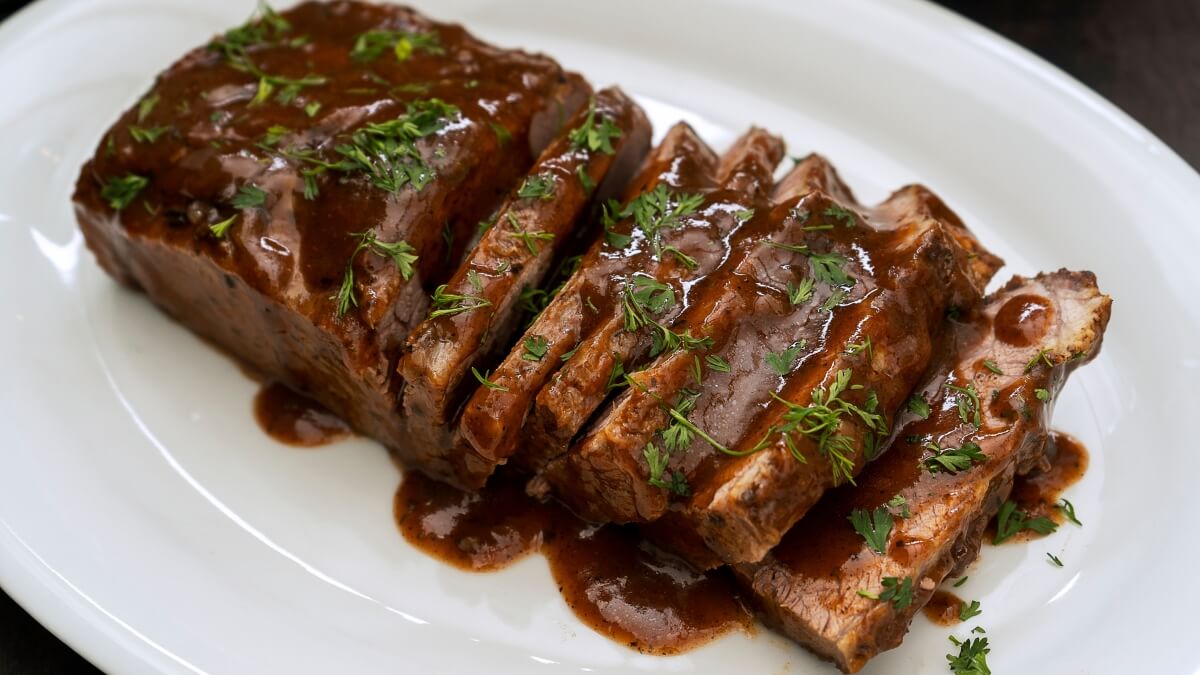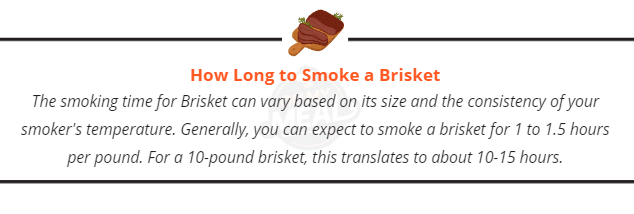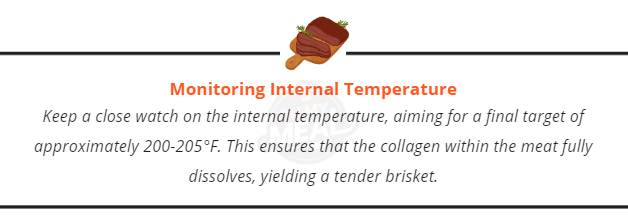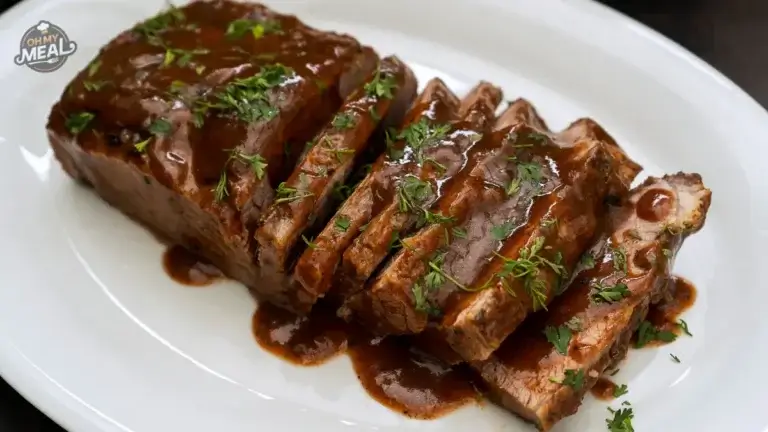
Father’s Day is a treasured occasion to honor and celebrate the paternal figures in our lives. What could be a more fitting tribute than crafting a mouthwatering feast that unites everyone? Smoking Brisket is a sumptuous selection and an extraordinary means of forging enduring memories.
Smoking Brisket embodies a venerable tradition that draws family and friends together, especially on days like Father’s Day. The enchantment lies in the blend of smoky essences, succulent meat, and the sheer delight of communal dining.
What is Brisket?
Brisket hails from the breast or lower chest of beef or veal. It is renowned for its robust, beefy savor and tender consistency when adeptly prepared. It bifurcates into two primary types: the flat cut and the point cut. The flat cut, being leaner and more uniformly shaped, facilitates easier slicing. Conversely, the point cut is heftier and boasts more marbling, resulting in a juicier culmination. Both cuts suit smoking admirably, yet the point cut often garners preference for its superior flavor.
Choosing the Right Brisket
Procuring a premium brisket is paramount to achieving excellent results. Seek a brisket with ample marbling, as the fat will melt during smoking, ensuring the meat remains moist and flavorful. The Brisket’s weight is also pivotal; a giant brisket necessitates a lengthier cooking time but accommodates more guests. Aim for a brisket weighing between 10 and 12 pounds for a standard family gathering.
Preparing the Brisket
Preparation constitutes the cornerstone of a triumphant smoked brisket. Commence by trimming the excess fat, retaining approximately a quarter-inch layer to sustain moisture. Subsequently, season the Brisket liberally with a dry rub or marinade. A quintessential dry rub might encompass salt, black pepper, paprika, garlic powder, and brown sugar. Permit the seasoned Brisket to rest for several hours or overnight in the refrigerator, letting the flavors to permeate the meat.
Essential Smoking Equipment
A dependable smoker is indispensable for brisket smoking. Various smokers exist, including offset smokers, pellet smokers, and electric smokers, each with distinct advantages and drawbacks. Choose one that aligns with your needs and experience level. Additionally, essential tools such as a meat thermometer, tongs, and a robust cutting board are imperative.
Wood Selection for Smoking
The wood type employed for smoking can profoundly influence your Brisket’s flavor. Hickory, oak, and mesquite are all popular options that have different smokiness profiles. Hickory delivers a potent, smoky essence, oak offers a more subdued and balanced profile, and mesquite provides an assertive, intense smoke. Experimenting with different woods will help you discover your preferred flavor profile.
What is the Secret to Tender Smoked Brisket?
The secret to tender smoked Brisket lies in patience and meticulous attention to detail. Slow cooking at a low temperature gently breaks down connective tissues, yielding incredibly tender and flavorful meat. Additionally, wrapping the Brisket during the stall and allowing it to rest before slicing contribute significantly to its tenderness.
How to Smoke a Brisket for Beginners
Smoking a brisket might seem daunting, but even beginners can achieve remarkable results with the right approach. Follow these steps to get started:
- Prepare Your Smoker: Preheat your smoker to maintain a consistent temperature of around 225°F.
- Season the Brisket: Apply your chosen rub or marinade generously.
- Place the Brisket on the Smoker: Position its fat side up to let the juices to flow through the meat.
- Monitor the Temperature: Monitor the Brisket’s internal temperature and ensure closely and ensure the smoker maintains the correct heat level.
What Not to Do When Smoking a Brisket
To avoid common pitfalls when smoking a brisket, keep these tips in mind:
- Don’t Rush the Process: Smoking brisket requires a low and slow method.
- Remember to Trim the Fat: Leaving too much fat can lead to an extra greasy texture, diminishing the quality of the Brisket.
- Don’t Skip the Rest Period: Resting is crucial for retaining the juices.
- Don’t Over-Smoke: Excessive smoke will make the meat bitter.
Smoking Process
Smoking a brisket is both an art and a science, requiring careful attention to detail to achieve the perfect smoky flavor and tender meat balance. Here’s a step-by-step guide to help you master the smoking process.
🔸 Setting Up Your Smoker
Preheating
Before entrusting your Brisket to the smoker, bring the apparatus to the optimal warmth. This preliminary step is imperative to maintain a uniform culinary ambiance. Strive for a temperature spectrum ranging from 225°F to 250°F. Preheating duration might span from 30 minutes to an hour, depending on your specific smoker model. Concurrently, utilize this interval to arrange your timber and combustible materials.
Maintaining Temperature
Consistent temperature is critical to a successful smoke. Fluctuations can cause uneven cooking and affect the final result. Use a good-quality thermometer to monitor the smoker’s internal temperature. Many smokers come with built-in thermometers, which can sometimes be inaccurate, so consider using a digital thermometer for more precise readings.
🔸 Smoking Times and Temperatures
Smoking a brisket demands patience, as it is an endeavor that may span 10 to 20 hours, influenced by the Brisket’s mass and the smoker’s temperature. Conventionally, allocate 1 to 1.5 hours per pound of Brisket. Nevertheless, the paramount factor is the internal temperature of the meat rather than the elapsed time. Your Brisket reaches perfection upon attaining an internal temperature of 195°F to 205°F.
Internal Temperature
A meat thermometer is used to check the Brisket’s internal temperature precisely. Gently insert the thermometer into the thickest section of the meat, steering clear of any bones or fat pockets to obtain a precise reading. The aim is to produce a tender, succulent Brisket that melts in your mouth.
🔸 Managing the Smoke
The type and amount of smoke play a significant role in flavor development. Here’s how to manage it effectively:
Choosing the Wood
Select your wood carefully, as different types impart different flavors. Hickory, oak, or mesquite are popular choices, each offering unique smoky profiles. Fruit woods such as apple and cherry infuse a gentle, sweet smoke that subtly enriches and intricately enhances the Brisket’s flavor .
- Hickory: Strong and smoky, fabulous for a robust flavor.
- Oak: Balanced and versatile, it pairs well with most meats.
- Mesquite: Bold and earthy, use sparingly to avoid overpowering the meat.
- Fruit Woods (Apple, Cherry): Mild and sweet, perfect for a nuanced smoke flavor.
Creating Thin Blue Smoke
Aim for thin blue smoke rather than thick white smoke. Thin blue smoke indicates clean combustion and imparts the meat a cleaner, more pleasant flavor. Thick white smoke can impart a harsh, bitter taste to the meat. To achieve this, use seasoned wood that burns efficiently and avoid overloading the firebox.
🔸 Spritzing and Wrapping
Wrapping and spritzing are techniques used to maintain moisture and enhance flavor during smoking.
Spritzing
Spritzing involves spraying the Brisket with a liquid every hour or so during the smoking process. This helps the meat stays juicy and tender and adds layers of flavor.
Common spritzing liquids include apple juice, apple cider vinegar, or both.
- Apple Juice: Adds a hint of sweetness.
- Apple Cider Vinegar: Adds tanginess and helps tenderize the meat.
- Combination: Balances sweetness and acidity.
Wrapping (The Texas Crutch)
Once the Brisket achieves an internal temperature of approximately 160°F 160°F, it’s time to wrap it in foil or butcher paper. His step helps keep the Brisket moist and juicy and elevates the flavor, ensuring a juicy and delicious result. This helps push through the stall—a phase where the meat’s internal temperature plateaus due to evaporative cooling—and retains moisture, resulting in a juicier brisket.
- Foil: Seals in moisture more effectively but can soften the bark.
- Butcher Paper: Allows the Brisket to breathe while maintaining moisture, preserving the bark’s texture.
To wrap the Brisket:
- Lay out a large piece of foil or butcher paper.
- Place the Brisket in the center and wrap it tightly, ensuring no gaps or loose ends.
- Return the wrapped Brisket to the smoker and keep cooking until it reaches the desired internal temperature.
Techniques
Low and Slow vs. Hot and Fast
- Low and Slow: For a truly exceptional brisket, embrace the “Low and Slow” method. This traditional approach involves smoking the Brisket at a consistently low temperature, ranging from 225°F to 250°F, over an extended period. This slow cooking process lets the connective tissues break down gradually, creating a tender and flavorful masterpiece. While this method demands patience and vigilant monitoring, it’s a tried-and-true technique that yields the most delicious results, celebrated by seasoned pitmasters.
- Hot and Fast: Cooking at a higher temperature (300°F to 350°F) for a shorter period can also produce a tender brisket. This method requires more attention to avoid overcooking but can be helpful if you’re short on time. It tends to create a slightly different texture and flavor profile than the low and slow method.

How to Smoke a Brisket
To smoke a brisket, follow these steps:
- Prepare the smoker: Set it to 225°F and ensure it’s clean.
- Season the Brisket: Apply your chosen rub or marinade.
- Place the Brisket on the smoker, fat side up, to allow the juices to flow through the meat.
- Monitor the temperature: Keep the heat steady and add wood chips as needed.
- Wrap the Brisket At around 160°F to help maintain moisture.
- Keep smoking Until the internal temperature reaches 200-205°F.
- Rest the Brisket For 1-2 hours before slicing.

The Stall: What It Is and How to Handle It
At around 150-170°F, the Brisket’s internal temperature might plateau, known as “the stall.” This happens as the meat sweats, causing evaporative cooling. Don’t panic! You can either wait it out or use butcher paper or foil to speed up the process.
Wrapping the Brisket
Wrapping helps to retain moisture and push through the stall. Wrap the Brisket tightly in butcher paper or even aluminum foil when it reaches around 160°F. This method is known as the “Texas Crutch.”
When to Wrap Brisket
The “Texas Crutch” technique involves wrapping the Brisket once its internal temperature hits around 160°F. This method helps overcome the stall phase and ensures the meat retains moisture.
What Temperature to Wrap Brisket
Wrap the Brisket at an internal temperature of 160°F to seal in moisture and heat, producing a tender, succulent final product.

Resting the Brisket
After the Brisket reaches the desired temperature, extract it from the smoker and allow it to rest. Resting enables the juices to redistribute, enhancing the meat’s juiciness and flavor. Envelop the Brisket in a towel and place it in a cooler for 1-2 hours.
Slicing and Serving
When it’s time to serve, carve the Brisket against the grain to make sure each slice is tender and flavorful. A well-prepared brisket will showcase a beautiful smoke ring and exude juiciness. Serve with your preferred BBQ sauce on the side for an extra flavor boost.
Smoking a Brisket and Preserving It’s Moisture
Maintaining a moist brisket throughout the smoking process involves several critical steps:
- Choosing a well-marbled cut.
- Sustaining a steady smoker temperature.
- Wrapping the Brisket at the appropriate time.
- Allowing it to rest adequately.
Additionally, incorporating a water pan in the smoker can help maintain the necessary humidity levels.
Side Dishes to Complement Smoked Brisket
Classic Sides
Traditional sides like coleslaw, baked beans, and cornbread are always crowd-pleasers. They perfectly complement the rich flavor of the Brisket.
Unique Sides to Try
For a twist, try serving smoked Brisket with grilled vegetables, mac and cheese, or a refreshing cucumber salad.
What Goes Good with Brisket
In addition to the classic sides, consider pairing Brisket with dishes like potato salad, roasted garlic mashed potatoes, or a tangy vinegar-based slaw. These sides enhance the flavors of the smoked meat and create a well-rounded meal.

Father’s Day is the ideal time to celebrate and honor the extraordinary men in our lives with a meal that symbolizes care and appreciation.
Smoking a brisket is more than just a cooking method—it’s a labor of love that brings family and friends all together, especially on Father’s Day. The process, from selecting the perfect cut to slicing and serving, requires patience and dedication. But the reward is worth every moment spent by the smoker: a tender, flavorful Brisket that melts in your mouth and creates unforgettable memories.
PrintSmoking Brisket for Father’s Day
The Texas Smoked Beef Brisket is a true classic that brings the rich, smoky flavors of Texas BBQ to your kitchen. Slow-cooked to perfection, this brisket is incredibly tender and packed with a robust blend of spices that create an irresistible savory experience.
Ideal for any occasion, this dish is a fantastic choice for family dinners, gatherings, or simply when you’re craving a hearty, flavorful meal. The slow-cooking process ensures that the brisket is succulent and flavorful, making it a standout centerpiece for any table. Whether you’re a BBQ aficionado or just love a good piece of beef, this Texas Smoked Beef Brisket will not disappoint.
Bring the taste of Texas to your kitchen with this slow-cooked smoked beef brisket! Perfect for any BBQ lover. 🍖🌟
- Total Time: 8-10 hours 15 minutes
- Yield: 8 servings 1x
Ingredients
- 1 (5 pound) beef brisket
- 1 tablespoon chili powder
- 1 tablespoon salt
- 1 tablespoon garlic powder
- 1 tablespoon onion powder
- 1 tablespoon black pepper
- 1 tablespoon sugar
- 1 tablespoon paprika
- 1 teaspoon dry mustard
- 1 bay leaf, crushed
- 1 1/2 cups beef stock
Instructions
- In a small bowl, mix chili powder, salt, garlic powder, onion powder, black pepper, sugar, paprika, dry mustard, and bay leaf.
- Rub the spice mixture all over the brisket.
- Place brisket in a slow cooker and pour beef stock around the meat.
- Cover and cook on low for 8-10 hours, or until the meat is tender and easily shredded.
- Remove brisket from the slow cooker and let it rest for about 10 minutes before slicing against the grain.
- Prep Time: 15 minutes
- Cook Time: 8-10 hours
- Category: Meat
Nutrition
- Serving Size: 6 ounces / serving
- Calories: 550 kcal


